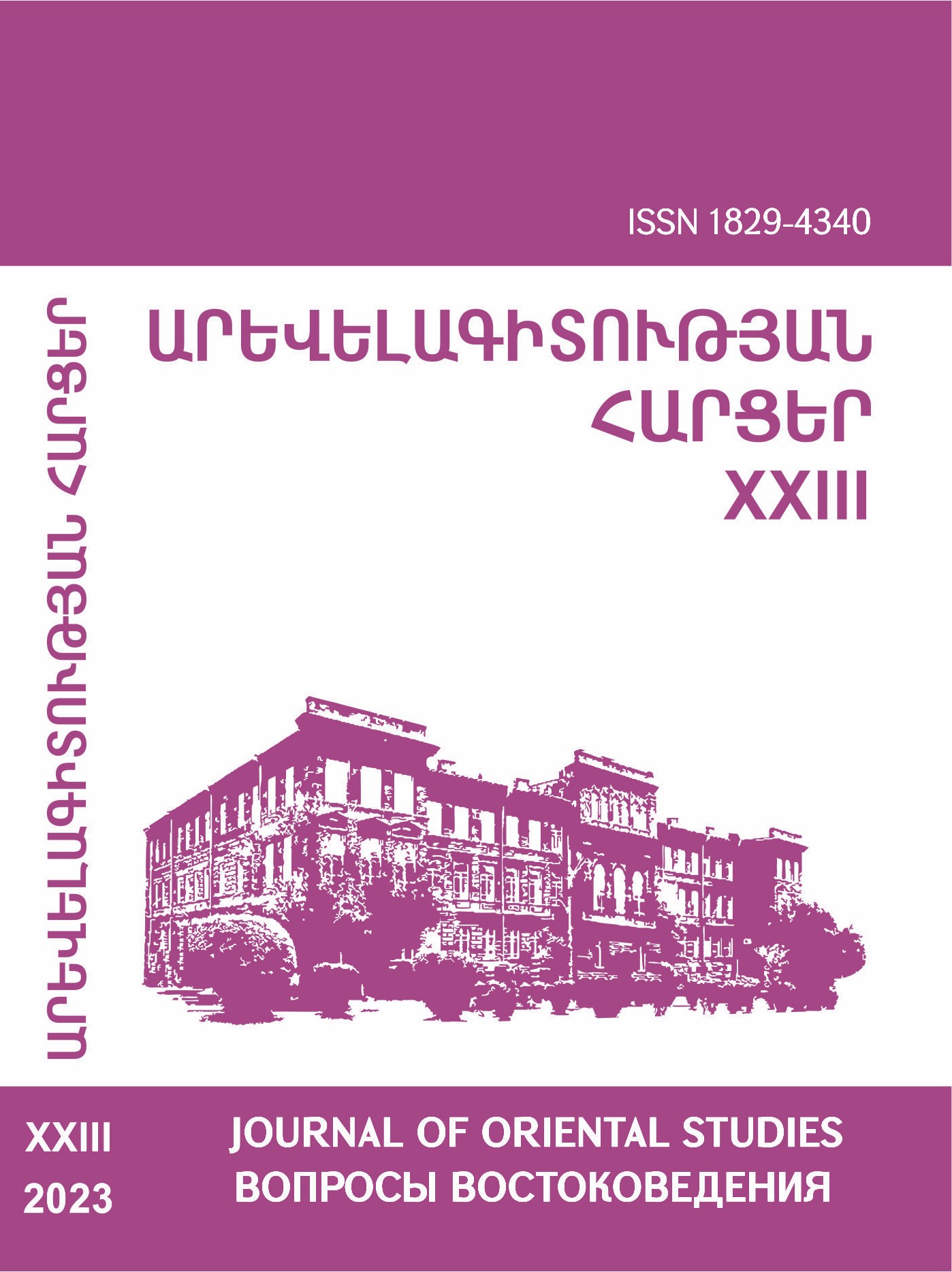THE SYMBOLS AND MOTIFS USED IN TRADITIONAL IRANIAN EMBROIDERY
DOI:
https://doi.org/10.46991/jos.2023.23.1.020Keywords:
Embroidery, Symbolism, Mythology, Barsam, Khatayi, EslimiAbstract
The recognition of the culture, identity, art, and especially handicrafts of every society is of special importance, therefore, the recognition of Iran's modern history and unique culture and Iranian society is also related to the recognition of its art and artistic works, and they are expressed in the best and most beautiful way by Iranian women. The History of Iranian Embroidery shows that Iranian art and culture, including handmade arts and crafts, have undergone many changes for thousands of years, but they have never lost their Iranian identity and roots. In this article, the meanings of symbols and patterns used in Iranian embroidery have been presented and their Iranian origin has been discussed.
References
Āhangarī, Behzād va Seyyed Rezā Hoseynī, Barresiy-e Tasir-e noqūŠ-e Sāsānī bar taz’inat-e mehrab-e masjed-e jam‘-e Orumiye (The Study of the Effects of Sasanian Motifs on Decorations of Orumiyyeh’s Great Mosque), Tehrān: Paž uhešhāye m‘mariy-e eslāmi, 1399 (2020).
Āmūzegār, ž āleh, Tārikh-e Asātirī-e Irān (The Mythological History of Iran), Tehrān: Samt, 1387 (2008).
-Akhavān Moqaddam, Nedā, Barresiy-e Zorūf-e Sāsānī az Didgāh-e Namādšenāsāne (The Study of Sasanian Vessels Based on Symbolism), Tehran: Farhangestān-e Honar, 1396 (2017).
-Burekhārt, Titus, Honar-e eslāmī-e zabān va bayān (The Islamic Art of Language and Expression), Tehrān: Sorush, 1365 (1986).
-De Beaucorps Monique, Ramzhāy-e Zendey-e Jahān (Living Secrets of the World), Tehrān: Markaz, 1373 (1994).
-Giršman, Roman, Honar-e Irān dar dorān-e pārtī va Sasanī (The Iranian Art During Parthian and Sasanian Periods), transl. Bahrām Farevašī, Tehran: Elmī va farhangī, 1370 (1991).
-Hal James, Fārhang-e Negārehī-e Namadhā dar Honar-e Šarq va Qarb
(The Picture Encyclopedia of Symbols in Oriental and Western Art), Transl. Roqayyeh Behzādi, Tehran: Farhang Moāser, 1392 (2013).
-Izadparast, Zibā, Giāh-e Lotus tā Eslimī va Khatāī (From Lotus to Eslimi and Khatayi), Tehran: Rahpuye Honar, 1385 (2006).
-Kafščiān Moqaddam, Asqar va Maryam Yāhaqqī, Barresiy-e Anāsor-e Namādin dar Negārgarī-e Irān (The Study of Symbolic Elements in Iranian Decorative Art), Tehrān: Bāqe Nazar, 1390 (2011).
-Latifpur Sabā va Katāyun Mazdāpur, Giyāh-e Hum va Naqš-e ān dar Āyyinhā va Asātir-e Hend va Irāni (Haoma and its Part in Traditions and Myths of India and Iran), Bushehr: Tahqiqāt Tamsilī dar zabān va adab, 1390 (2011).
-Nafisi, Sabā, Tārikh-e Tamaddon-e Irān-e Sāsānī (The History of Sasanian Civilization), Tehrān: Ketāb Pārseh, 1388 (2009).
-ūshidrī, Jahāngir, Dānešnāmeh Mazdāyasnā (The Mazdayasna Encyclopedia), Tehrān: Markaz, 1383 (2009).
-Yung, Karl Gustāv, Ensān va Sambolhāyaš (The Man and its Symbols), transl. Mahmūd Soltāniyeh, Tehrān: Jāmi,1395 (2016).
-ZamanKhodāi, Mohammadzamān va Sādeq Karimī va Mehdi Yarahmadī, Negāhi be Seyr-e Tahavvol va Namadinegī-e Botteh va Jeqqe (A Look At the Transition and Symbolism of Boteh and Jeqqeh), Tehrān: Tahqiqāt Farhangī Irān, 1387 (2008).
Downloads
Published
Issue
Section
License
Copyright (c) 2023 Author(s)

This work is licensed under a Creative Commons Attribution-NonCommercial 4.0 International License.
Authors will be entitled in ownership of the copyright for their publications.
Permitted third party reuse is defined by the following user license:
Creative Commons Attribution-Non-Commercial (CC BY-NC). CC BY-NC allows users to
copy and distribute the article, provided this is not done for commercial purposes. The users may
adapt – remix, transform, and build upon the material giving appropriate credit, providing a link
to the license. The full details of the license are available
at https://creativecommons.org/licenses/by-nc/4.0/.
Under this license, authors retain ownership of the copyright for their publications, but
grant Journal of Օriental Studies and Yerevan State University
Publishing house a non-exclusive license to publish the work in paper and electronic form and
allow anyone to reuse, distribute and reproduce the content as long as the original work is
properly cited. Appropriate attribution can be provided by simply citing the original work. No
permission is required from the authors or the publishers.

